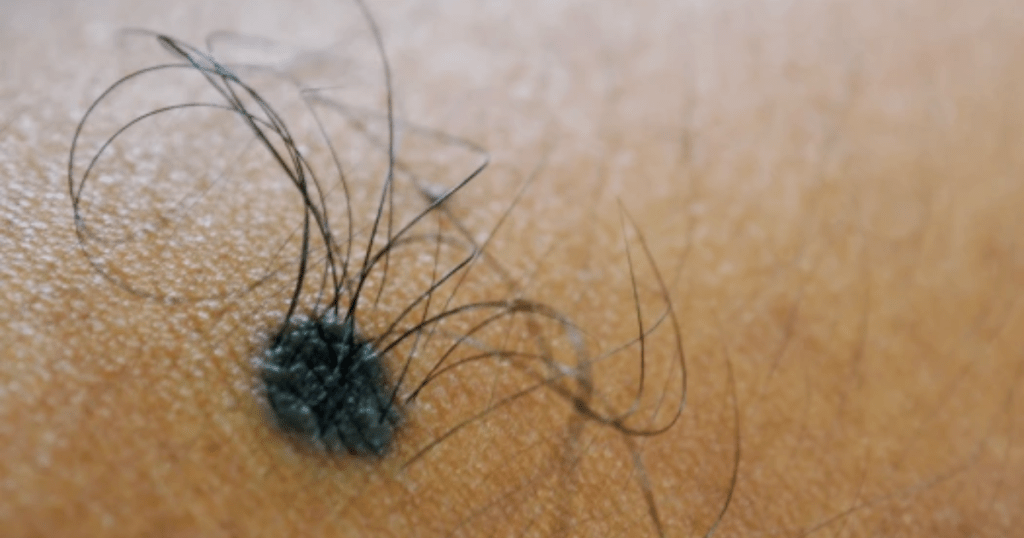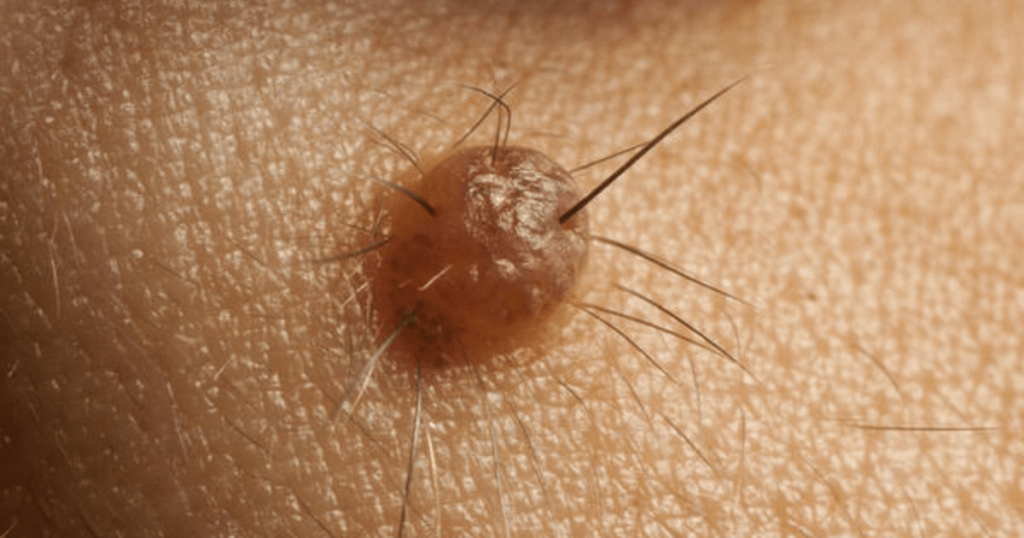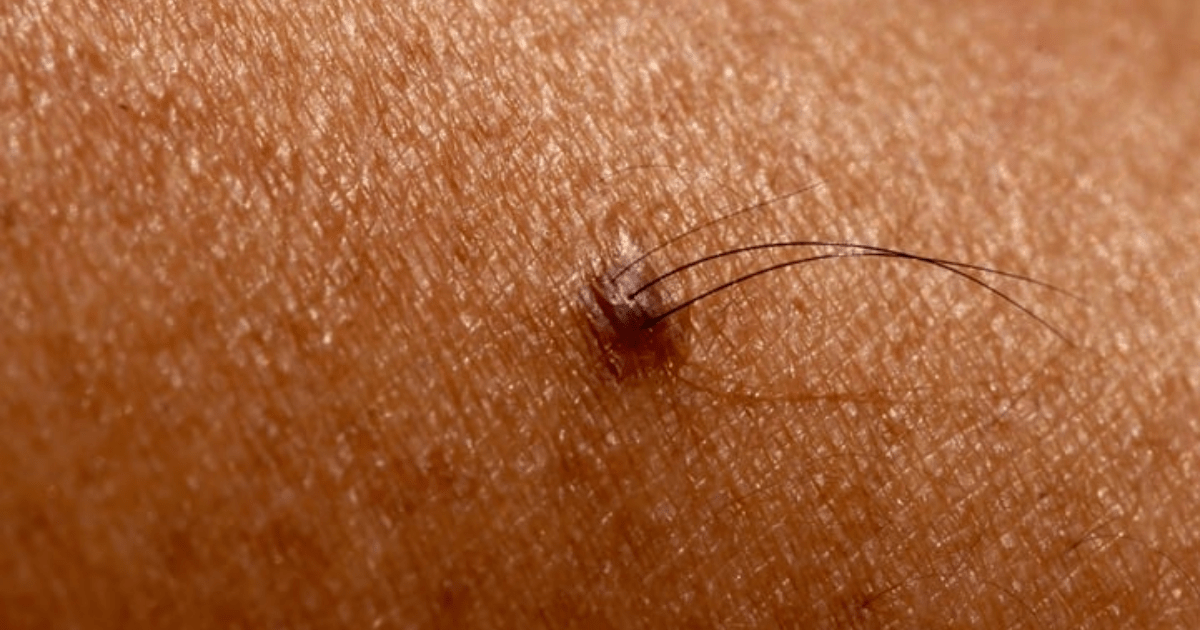Moles are small, dark spots that can appear on our skin. It’s an interesting question. Moles are tiny clusters of pigmented cells called melanocytes in our skin. These cells give moles their dark color. Sometimes, these moles can also have hair growing out of them. The reason for this is quite simple.
Hair follicles produce hair, which acts as insulation and helps to keep our body warm. Even though moles are usually small and flat, they can still have hair follicles within them. This is why some moles grow hair. We will explore Why Do Moles Grow Hair and learn about the reasons behind it. Let’s dive in and discover the mysteries of hair on moles.
While it is common for moles to have hair, it’s important to remember that not all moles will have hair growing on them. It varies from person to person. Some moles may have fur, while others may not. The amount and thickness of the hair can also vary. So, if you have a mole with hair, don’t worry.
The phenomenon of Hair Growth in Moles
Moles are common skin growths that can appear on different parts of our bodies. You might have noticed that some moles have hair growing out of them. Why Do Moles Grow Hair? This is interesting and makes you wonder why moles grow hair. Let’s explore this phenomenon and understand why it happens.

What Are Moles?
Moles, also known as nevi, are small, dark spots or raised areas on our skin. They can vary in size, shape, and color. Moles are usually harmless and can be present from birth or develop later in life. Most moles don’t cause problems or require treatment unless they show signs of change or become bothersome.
Hair Follicles and Moles
We need to learn about hair follicles to understand why hair grows from moles. Hair follicles are tiny structures in our skin that produce and grow hair. They are all over our bodies, including areas where moles are present. When a mole forms, it can sometimes contain hair follicles within it. This is why hairs can grow out of moles.
The Connection between Moles and Hair Growth
Hair in moles is due to the interaction between hair follicles and the cells that form the mole. When a mole develops, the cells responsible for pigmentation can also trigger the growth of hair follicles. These hair follicles then produce hair that emerges from the mole.

Types of Moles
Not all moles have hair growing from them. The presence or absence of hair in moles can vary depending on the type:
Common Moles:
These regular moles can appear anywhere on our bodies, including areas with hair. Typical moles can sometimes have hair growing out of them.
Congenital Moles:
Congenital moles are moles that are present from birth. They can vary in size and color. Some congenital moles may have hair growing from them.
Atypical Moles:
Atypical moles, or dysplastic nevi, are more giant and have irregular shapes. Hair growth from atypical moles is less common but can still occur.
Importance of Monitoring Moles
While most moles are harmless, watching them for any changes is important. Changes in size, color, shape, or the appearance of new symptoms like bleeding or itching could indicate a potential issue. If you notice any changes in your moles, it’s important to inform an adult or a healthcare professional.
When to Seek Medical Advice
In some cases, the presence of hair in moles may be associated with underlying conditions or abnormalities. If you have concerns about the hair growth in your moles or notice any changes, it’s important to seek medical advice. A dermatologist, a doctor specializing in skin health, can evaluate your moles and provide appropriate guidance.
Taking Care of Moles
To take care of your moles and prevent any potential issues, you can follow these general guidelines:
Protect Your Skin:
Limit your exposure to the sun and use sunscreen to protect your skin from harmful UV rays. This can help reduce the risk of developing new moles or changes in existing ones.
Monitor Your Moles:
Regularly check your moles for size, shape, color, or symptom changes. If you notice any concerning changes, inform an adult or a healthcare professional.
Avoid Scratching or Picking:
Refrain from scratching or picking at your moles, which can irritate the skin and potentially lead to complications.
Inform an Adult:
If you have any concerns or questions about your moles, it’s important to talk to an adult or a healthcare professional. They can provide guidance and answer your queries.
FAQ’s
Do all moles have hair?
Not all moles have hair, but some can grow hair from the hair follicles within them.
How do moles develop hair?
Hair follicles within moles are like those found in other body areas, allowing hair to grow from them.
Is hair growth in moles different from hair growth elsewhere in the body?
Hair growth in moles is like growth in other areas of the body, with hairs varying in thickness, color, and texture.
Will the hair on moles grow back after removal?
Hair on moles can grow back after removal, as the hair follicles within the mole remain intact.
Are moles with hair more common in certain people?
The presence of hair on moles can vary among individuals, and it is not restricted to any particular group.
Conclusion
In conclusion, Why Do Moles Grow Hair? Hair growing from moles is a natural occurrence due to the interaction between hair follicles and the cells that form the mole. Most moles are harmless, but it’s important to monitor them for any changes and seek medical advice if needed. By protecting your skin, monitoring your moles, and informing an adult or a healthcare professional about any concerns, you can ensure the health and well-being of your skin and moles.








